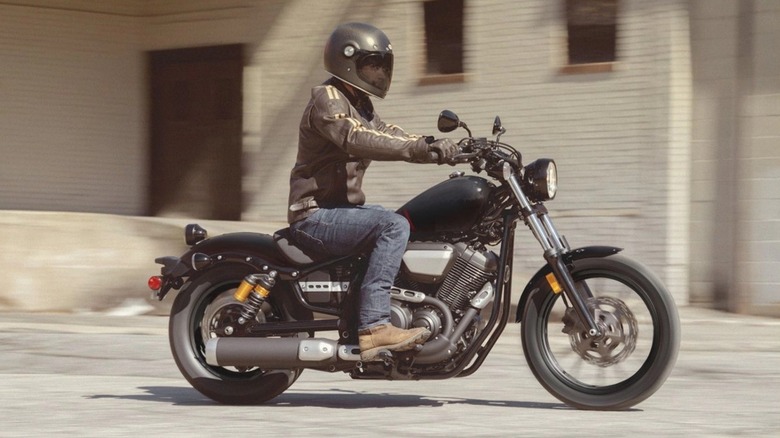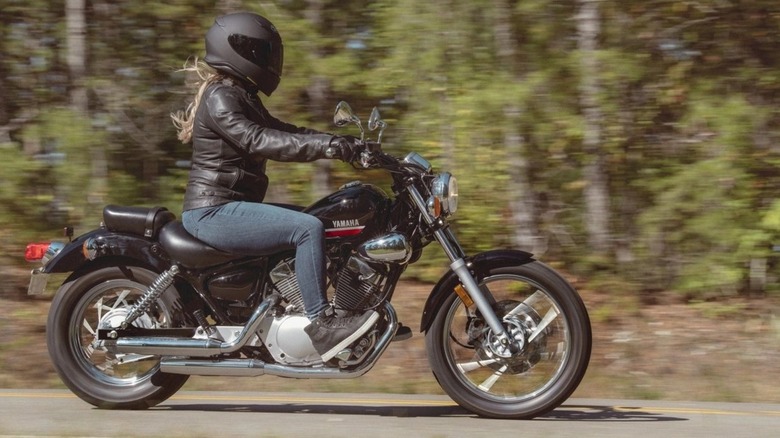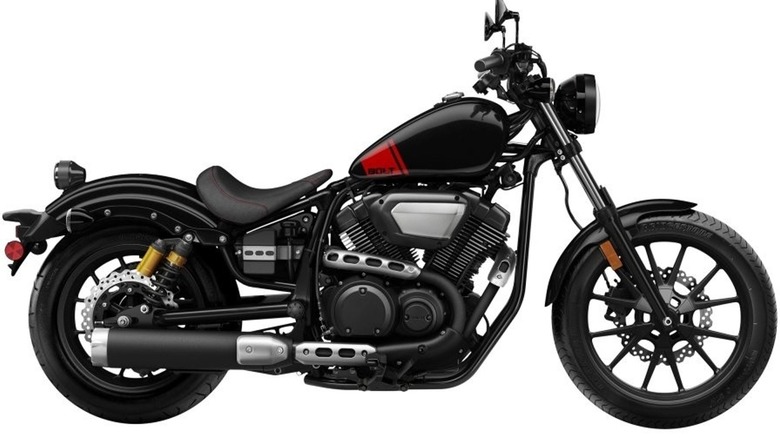Does Yamaha Still Make A V-Twin Motorcycle Engine?
V-twin powered motorcycles were prevalent prior to WWII but fell out of favor with brands other than Harley-Davidson until the 1980s. Yamaha Motors was the first Japanese motorcycle manufacturer to offer a V-twin motorcycle in 1981. The company not only offered the V-twin cruiser-style Virago, it doubled-down with the sport-touring XV920. While V-twin motorcycle engines rank relatively high for reliability, the early Yamaha Virago XV535 V-twins were plagued by electrical and carburetor issues making them some of the most unreliable motorcycles ever built.
In 2005, Yamaha introduced the Road Liner cruiser to the North American market. The Yamaha Road Liner XV1900A featured one of the biggest motorcycle engines ever made, a 1,854cc air-cooled V-twin. Yamaha's Star Venture and Star Eluder were the last of the company's big V-twin motorcycles, being discontinued after a short three-year production run a few years ago. In the absence of some great V-twins, you might wonder if Yamaha still makes a V-twin motorcycle engine. If so, you'll be pleased to know that they do, but only for a couple of models.
The 2024 Yamaha V Star 250
The 2024 Yamaha V Star 250 ranks as one of the most affordable motorcycles on the market with its $4,699 MSRP. The V Star 250 features an air-cooled 249cc (15.2 cubic-inch) V-twin engine with 49.0mm (1.93-inch) diameter cylinders and a 66.0mm (2.60-inch) crankshaft stroke. The V Star 250 engine uses a 26mm Mikuni downdraft style carburetor 10.0:1 compression, and a transistor-controlled ignition (TCI) system for smooth power across the rpm range and predictable low-end throttle response. The V-twin's characteristics not only inspire confidence at any skill level, its lightweight design affords a low 27-inch (685.8mm) seat height that's perfect for smaller riders.
Whether you're a beginner or an experienced rider, everyone enjoys spending less money at the gas pump. In conjunction with the 324-pound (147 kg) 2024 V Star 250's chain drive, 5-speed transmission, and dual exhaust, the 249cc 60-degree V-twin gets an estimated 78 mpg (33.2 km/l). Combine that efficiency with the bike's 2.5-gallon (9.46-liter) fuel tank, and you could ride from Paris (Texas) to Bogata (also Texas) and back on a quarter tank of gas.
Yamaha's other current V-twin engine powers the 2024 Bolt R-Spec
Priced at $8,899 the 2024 Yamaha Bolt R-Spec is powered by a 942cc (58 cubic-inch V-twin and considered one of the coolest looking motorcycles from Yamaha. While it also uses a 5-speed multiplate wet clutch transmission for easy shifts, the TCI system to deliver sparks where needed, and a 60-degree air-cooled V-twin design, the Bolt R-Spec features 9.0:1 compression, belt final-drive, and unique engine mapping for improved low and mid-range performance. Other Bolt R-Spec V-twin engine features include its 85.0mm (3.346-inch) diameter cylinder bore and 83.0mm (3.268-inch) crankshaft stroke. The 942cc V-twin ditches the Mikuni carburetor in favor of 3D-mapped fuel injection alongside the R-Spec's two-into-one exhaust system.
With more than three times the displacement of the V Star 250 you might expect the Bolt R-Spec to dwarf its Yamaha stablemate. While it is considerably heavier at 542 pounds (245.8 kg), the seat height is still only 27.2 inches (690.88 mm). Unfortunately for those pinching pennies at the pump, the more powerful Bolt R-Spec's estimated fuel economy drops to 51 mpg (21.7 km/l) and although its 3.4-gallon (12.87-liter) is larger, you'll use more than a quarter tank on the round trip from Paris to Bogata.


